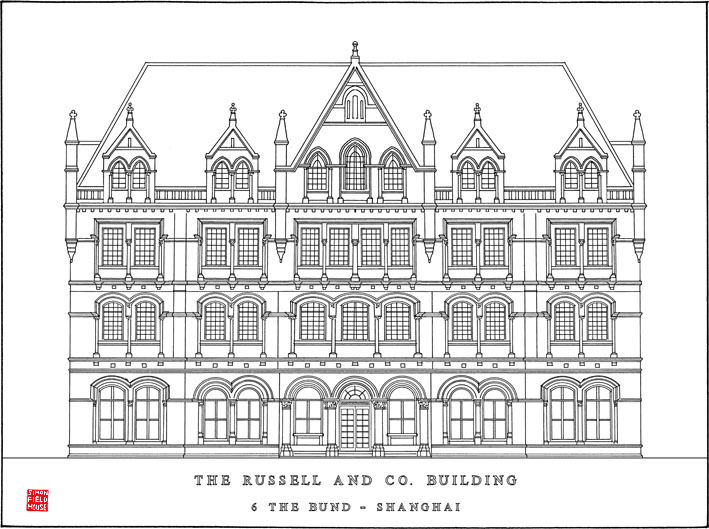
Russell & Co Building No 9 The Bund Shanghai
Russell & Co Building No 9 The Bund Shanghai was constructed in 1901 by The China Merchants Steam Navigation Company which was run by the Qing Dynasty's Ministry of Trade. The government had purchased the bankrupt American Russell & Co. in the 1870s, and subsequently built this building on the site of their riverfront garden. The building stands as one of China's most symbolic and memorable examples of the nation's early modernization process. It appears fine and delicate, and is the Bund's unique remaining example of neo-Classical external-corridor architecture of the late Victorian era. Furthermore, it is one of two examples of red-brick construction along the Bund's row of grey buildings (the other being the South Building of the Peace Hotel). The main three-storey structure is made of brick, stone, timber and steel, enclosing a space of 1,460 square meters. The structure is divided into five bays and supported by eight steel columns and masonry peripheral walls. The original floors were of post-and-beam wooden construction. The external perspective reveals a three-tiered, Neo-Classical style with sloping rooves, with the Eastern Bund-facing external-corridor with Corinthian and Tuscan columns on the second and third floor, and a connecting structure off the south-western corner made entirely of brick and timber. The Eastern facade flanking wings have English Classical Renaissance-styled gables. Granite stone is primarily used in the Eastern facade for the base, as well as the Chinese traditional greenish slate for the eaves and roof.